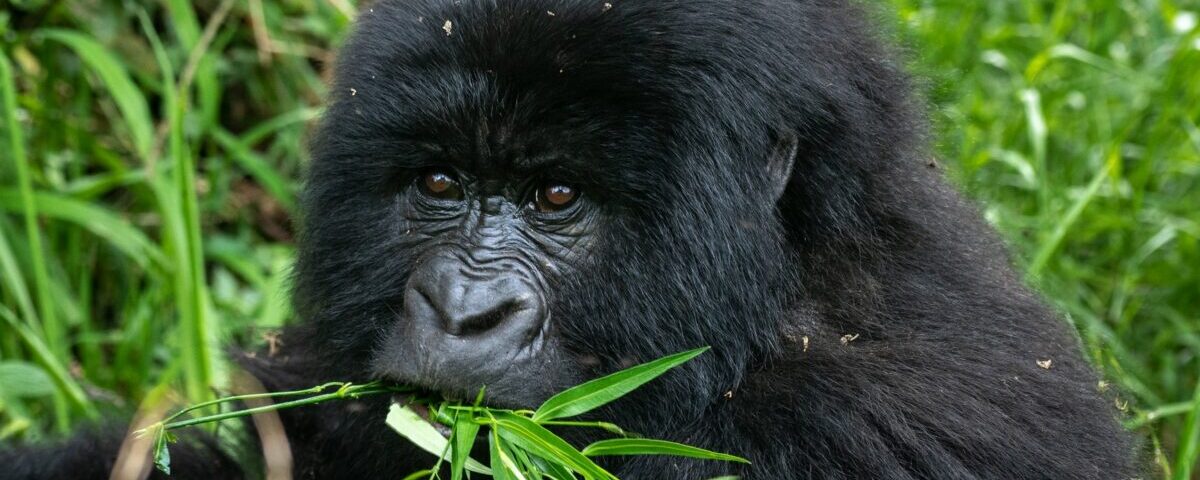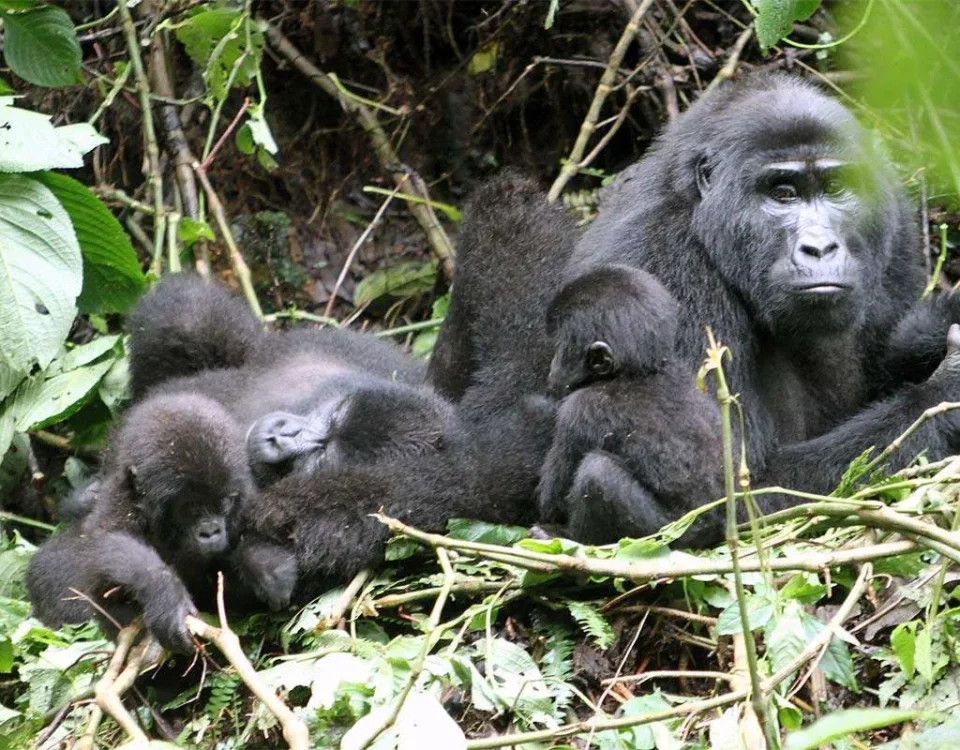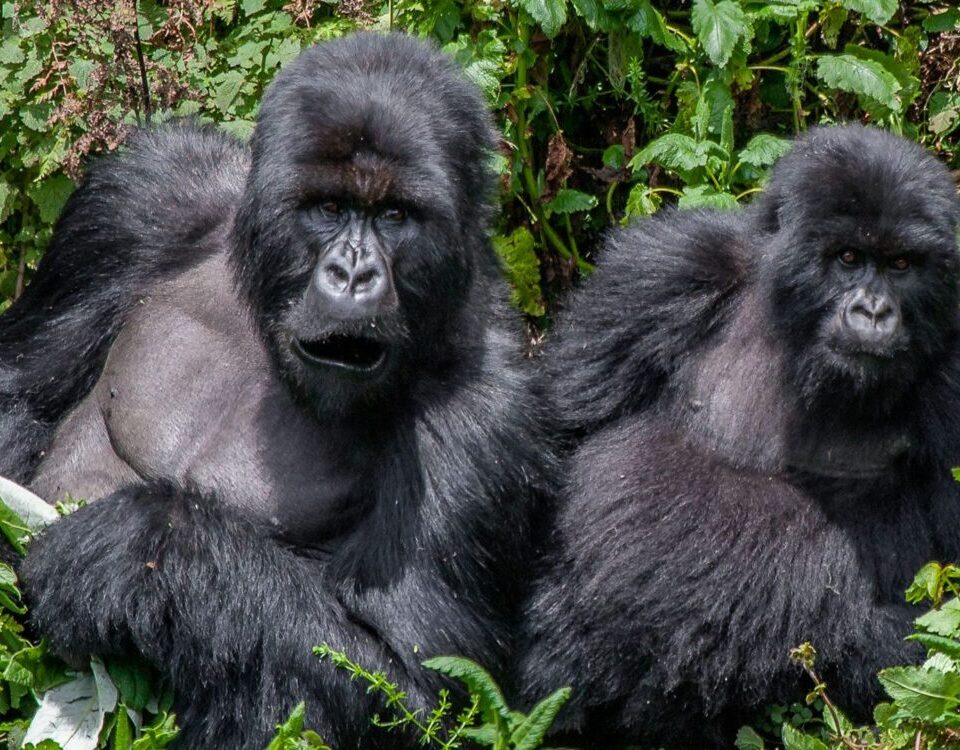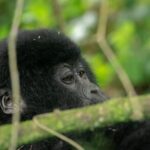
How Much is the Gorilla Trekking Permit in Uganda?
March 12, 2025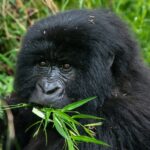
What is the Age Limit for Gorilla Trekking?
March 13, 2025What Level of Fitness is Needed for Gorilla Trekking?
Gorilla trekking in Uganda is one of the most thrilling wildlife experiences a person can have. It offers the opportunity to see endangered mountain gorillas in their natural habitat, providing an unforgettable connection with nature. However, while this experience is remarkable, it also demands a certain level of physical fitness. The trek can involve long, strenuous hikes through dense forests and mountainous terrain, and understanding the fitness requirements will help ensure that you are properly prepared. This article will guide you through the level of fitness needed for a successful gorilla trekking adventure, the physical demands of the trek, and how you can prepare for the journey.
The Physical Demands of Gorilla Trekking
Gorilla trekking is not your typical walk in the park. The trek takes you through the rainforests of Bwindi Impenetrable National Park or Mgahinga Gorilla National Park, both of which are known for their rugged, mountainous terrain. The terrain can range from steep, muddy trails to slippery slopes and uneven ground. Trekking through these environments requires physical endurance, agility, and strength, especially since the gorillas do not reside in one specific location.
You could spend anywhere from 30 minutes to 6 hours hiking to find the gorillas, depending on where the ranger guides track them. Once you find the gorillas, you are allowed to spend up to one hour observing them. This hike can involve steep uphill or downhill walks, and sometimes crossing rivers or dense vegetation, making it a physically demanding experience.
Cardiovascular Fitness: The Foundation for Endurance
While you don’t need to be a marathon runner, having good cardiovascular fitness is essential for gorilla trekking. The ability to walk for several hours, often at a steady pace, is a crucial factor. It’s also important to manage any fatigue that may set in, especially if the trek lasts for more than a few hours.
If you are someone who regularly engages in activities like walking, jogging, or cycling, your cardiovascular system will be well-prepared for the trek. Aerobic exercises, such as swimming or long walks, can improve your stamina, enabling you to maintain a steady pace over extended periods. It’s important to train for endurance, as the hike can be physically taxing at times.
Leg Strength: A Key Requirement for Uphill and Downhill Treks
When it comes to the physical demands of gorilla trekking, leg strength plays a pivotal role. The terrain you will be traversing involves steep inclines and descents, often over rocky or muddy paths. Strength in your legs, particularly in your quadriceps, hamstrings, and calves, will help you navigate these challenging conditions.
Leg exercises like squats, lunges, step-ups, and calf raises can help improve your strength. These exercises specifically target the muscles used when climbing uphill or descending on slippery terrain. Hiking on hills and uneven ground in your local area can simulate the conditions you’ll face during the trek, so it’s beneficial to train on different types of terrain before your trip.
Additionally, having strong ankles and knees will help you balance and avoid injury as you move through uneven terrain. You may also be given walking sticks or poles, which will assist with balance and reduce the strain on your knees, especially during steep descents.
Balance and Coordination: Overcoming the Forest’s Obstacles
In addition to leg strength, having good balance and coordination is crucial during gorilla trekking. The dense forest may require you to step over fallen logs, navigate narrow paths, and cross streams or rivers. These obstacles can challenge your balance, and having good coordination can make these tasks easier.
A simple way to improve your balance is by engaging in activities such as yoga or pilates, which work on core strength and stability. Balancing exercises like standing on one leg or using a balance board can also help prepare your body for the varied terrain you will encounter.
Mental Endurance: Staying Motivated and Positive
While physical fitness is important, mental endurance is just as vital for a successful gorilla trek. The trek can be longer and more demanding than you expect, and at times you may feel tired or frustrated. A positive attitude and the ability to push through physical discomfort will help you succeed. Focus on the end goal—the incredible experience of encountering mountain gorillas in the wild—and let this motivation drive you forward.
Staying mentally strong will help you stay focused on the journey, even when the trail gets tough. When your body feels exhausted, it’s your mindset that will carry you to the finish line.
What to Expect on a Typical Gorilla Trek
Before you embark on your gorilla trekking adventure, it’s important to know what to expect on the day of the trek. Generally, the trek begins early in the morning at the designated park headquarters. The first part of the trek involves a briefing by the park rangers, where you’ll learn the rules and guidelines for interacting with the gorillas. Afterward, you’ll set out into the forest with a group of trekkers, accompanied by experienced guides and trackers.
The guides and trackers will help you navigate through the forest, and they will be responsible for finding the gorillas. Depending on the location of the gorillas, the trek could be short or long. The terrain can be steep, muddy, and dense, so it’s essential to be prepared for these challenges.
Once you’ve reached the gorillas, you’ll spend up to one hour observing them. This is the highlight of the trek, and the experience is both exhilarating and humbling. After the allotted hour, you’ll begin your return journey. The return hike may be quicker and easier, but the trail can still be challenging, especially if the weather has made the path slippery.
Preparing for Gorilla Trekking: Tips for Success
- Start Preparing Early
Physical preparation should begin at least a few months before your trip. Focus on building endurance through cardiovascular exercise and strengthening your legs with squats, lunges, and other lower-body exercises. Walking on uneven terrain, hiking on local hills, and practicing balance exercises will help prepare your body for the trek.
- Consider Hiring a Porter
If you are concerned about the difficulty of the trek, consider hiring a porter. Porters are local people who are experienced in navigating the forests and can assist you with carrying your gear or providing support along the way. They can help take some of the physical strain off your shoulders, especially if you’re feeling fatigued.
- Stay Hydrated and Nourished
It’s important to stay hydrated during the trek, so carry enough water with you. You may also want to bring snacks like energy bars or fruit to keep your energy levels up. The trek can be long and tiring, so keeping your body fueled is essential.
- Wear the Right Gear
Ensure you have the right clothing and equipment for the trek. Wear sturdy hiking boots, long-sleeve shirts, and long pants to protect yourself from thorny bushes and insects. A light rain jacket is recommended, as rain can occur unexpectedly in the forest. Don’t forget sunscreen, a hat, and gloves to protect yourself from the elements.
Conclusion
Gorilla trekking in Uganda is a physically rewarding experience, but it does require a certain level of fitness to be fully enjoyed. The trek involves navigating steep slopes, uneven paths, and sometimes slippery terrain. Cardiovascular endurance, leg strength, balance, and coordination are all important for a successful trek. With the right physical preparation, mental resilience, and the proper gear, you can ensure that your gorilla trekking adventure will be an unforgettable and fulfilling experience.

